
denkste: puppe / just a bit of: doll | Bd.3 Nr.1.1 (2020) | Rubrik: Fokus
Holy Puppets: The Double Nature of the Medieval Bust Reliquary1
Michelle Oing
Focus: Puppen/dolls like mensch – Puppen als künstliche Menschen
Focus: Dolls/puppets like mensch – dolls/puppets as artificial beings
Abstract:
The essence of puppet performance is its balance between animacy and
inanimacy,
the artificial and the natural. This article proposes the framework
of puppetry as a means of understanding the transcendent potential of a group
of medieval reliquary busts from Cologne. In both appearance and manipulation, these
sculpted busts blurred the boundaries between life and death, much like puppets. I argue
that the dual mimesis of these busts, both visual and kinetic, enhanced their theological
purpose as vessels for the bones of saints, and points to a medieval interest in the productive
paradoxes of representation. Through their puppet-like hybridity, these sculptures
bridged the distance between humans and the divine for medieval viewers. The article
concludes by proposing a parallel between the temporary lives of puppets and the hybrid
nature of artificial intelligence, suggesting that medieval conceptions of mimesis can
provide
a means of thinking through twenty-first century technology.
Schlagworte: relics; reliquaries; sculpture; mimesis; hybridity; theology; medieval studies; puppetry; animation
Zitationsvorschlag: Oing, M. Heilige Puppen: Die Doppelnatur Des Mittelalterlichen Büstenreliquiars. de:do 2020, 3, 28-37. DOI: http://dx.doi.org/10.25819/ubsi/5594
Copyright: Michelle Oing. Dieser Artikel ist lizensiert unter den Bedingungen der Creative Commons Namensnennung 4.0 International Lizenz – Weitergabe unter gleichen Bedingungen 4.0 International.(https://creativecommons.org/licenses/by-sa/4.0/deed.de).
DOI: http://dx.doi.org/10.25819/ubsi/5594
Veröffentlicht am: 20.10.2020
Um auf Zusatzmaterial zuzugreifen, besuchen Sie bitte die Artikelseite.
The puppet’s hybridity
While the puppet is decidedly not alive, it is not exactly dead, either.
When used in performance, the puppet occupies a liminal space in
which the boundary between the animate and the inanimate is destabilized.
Each gesture the puppet performs evokes an entire network of dualisms,
only to suggest that they are not as separate as one might hope: the puppet is both
animate and inanimate, real and copy, artificial and natural.
In its assertion of both/and, or neither/nor, the puppet proclaims its hybridity.
Like all hybrid beings, it is an ambivalent creation, inspiring both fear and desire.
We can see this fear of the hybrid in Carlo Collodi’s Pinocchio (1883), where one
of the first acts of the newly animated puppet is to disrespect its maker: “Before
the mouth was even finished, it began to laugh and mock him” (Collodi 1883, 9).
However, the other side of this ambivalence is important, too – a desire for the
potential that arises from the puppet’s hybridity.
Both scholars and puppeteers have long recognized the productive potential
embodied by the puppet’s simultaneous animacy and inanimacy. The concept
of “double vision,” as put forth by Steve Tillis,
offers the best means of understanding this ontological
tension. Tillis uses this phrase to refer
to the audience’s experience of the puppet, in
which they see it, at one and the same time,
as both “perceived object” and “imagined life”
(Tillis 1992, 7). As a result of this dual nature,
the puppet “pleasurably challenges its audience
to consider fundamental questions of what
it means to be an object and what it means to
have life” (ibid., 7).
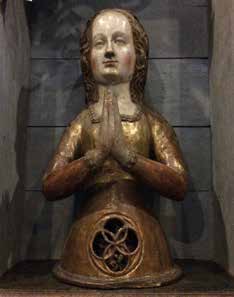
Figure 1: Reliquary bust of a companion of St. Ursula, c. 1330/40.
It is in this “pleasurable
challenge” that the power of puppetry lies, in
its ability to push the audience to reflect on
their own conceptions of the animate and the
inanimate, the real and the artificial.
As John Bell writes, despite the frequent marginalization
of puppetry, this medium “is always
a serious matter, a play with transcendence,
a play with the basic forces of life and death” (Bell 1996, 19).2 In what follows, I will explore the powerful, transcendent play of
a group of objects which, too, were seriously engaged with meditations on life
and death: the medieval reliquary busts of the companions of Saint Ursula from
Cologne (cf. figure 1-3).
Like the puppet, these sculpted busts combined an anthropomorphic appearance
with the ability to move, lending them an “imagined life.” At the same
time, however, they asserted their objecthood in multiple ways, creating the double
nature
– or “double vision,” in Tillis’ formulation – that is the essence of the puppet.
To suggest that the Ursula busts were analogous to puppets is not simply
to give them a new name. Puppetry supplies a new interpretive framework for
exploring how these artificial avatars of the sacred were encountered and understood
in medieval Cologne. The question at the heart of this article is how the
visual and kinetic mimesis of these busts enhanced their theological purpose as
vessels for the sacred bones of saints. Seen as puppet analogues, the dual mimesis
of these busts points to a medieval interest in the powerful, productive paradoxes
of representation, and their utility as devotional tools to span, at least temporarily,
the distance between humans and the divine.
The first section introduces the reliquary busts of Cologne, and suggests the
ways in which the lens of puppetry can clarify their use. In the next section, the
busts are presented as objects in action, combining the simultaneous suggestion
and denial of life to inspire “double vision” in those who view them. Finally, Iconclude
by exploring how the double nature of these busts amplified their theological
aim, calling attention to the holy relics contained within.
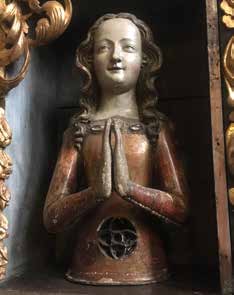
Figure 2: Reliquary bust of a companion of St. Ursula, c. 1350
The Ursula busts of Cologne
The so-called Ursula busts were mass-produced in Cologne beginning in the
twelfth century, with the majority produced between 1270 and 1360, in order to
house the bodily relics of St. Ursula and her eleven thousand companions (Urbanek
2010, 37).3 They thus form an important material component of the medieval
cult of relics, a vital aspect of medieval Christianity. Relics were understood to be material objects with a connection to a saint, ranging from bits of cloth to actual
bones or tissue from their body (Brown 1981). Because of this holy association,
relics had the potential to perform miracles, as evidenced by the myriad medieval
stories of their wonder-working.4
It is no surprise, then, that relics were used as devotional tools for medieval
Christians. Saint Ursula was of particular importance in medieval Cologne, because
according to her legend, she and her companions had been martyred there
by the
Huns.
Though this hagiographical tale had been in circulation since at least the fifth
century, the discovery of a Roman cemetery in Cologne near the site of a church in
their honor in 1106 was seen as definitive proof of Ursula’s story (Holladay 1997,
72). More importantly, this cemetery provided an unprecedented number of holy
relics, launching the mass production of the Ursula busts under study here.
These busts remained remarkably similar over the course of the two centuries in
which they were most prodigiously produced (cf. figure 1-3).
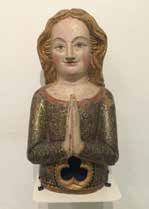
Figure 3: Reliquary bust of a companion of St. Ursula, c. 1340
Carved in wood, usually walnut, most of the busts are roughly life-sized, measuring between 40 and 50 centimeters in height (Bergmann 1989, 287pp). The majority of the medieval busts are of women, but some also depict men and even children who, according to the legend, were inspired to join Ursula’s group of travelers. The faces of the busts are often carved with narrow eyes, a smiling mouth, and a wide nose, and are painted in tones that imitate human flesh. The hair and clothing are usually finished with gold detailing, and many of the busts also include a trefoil or quatrefoil opening through which the relics within would have been visible. They also include the skull relic within the head of the carved figure, accessible via a hinged lid that forms the crown of the head.
Acting as the “faces” for the relics within, these anthropomorphic sculptures took
an active part in the devotional and liturgical life of the medieval church. The
largest single group of these bust reliquaries was housed at the Church of Saint
Ursula, and within this sacred space they were frequently on the move, carried in
procession, placed on altars, and even taken to the city walls to protect Cologne.
Like puppets, then, these busts combined an anthropomorphic appearance
with mobility – that is, their mimesis of the human was both visual and kinetic.
At the same time, however, we must keep their object status in mind. Indeed,
evidence indicates that medieval viewers – from their creators to the laity that
encountered them – were well aware that these sculpted busts were inanimate
objects, no matter the divinity imputed to them by virtue of the relics they contained.
In short, these busts encouraged their audience to see them with “double
vision” – as both perceived objects, and as imagined lives.
Life and its lack: the tension of the Ursula busts
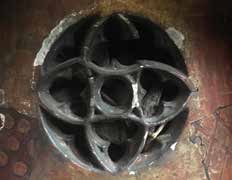
Figure 4: Detail of Figure 2, showing opening with visible relicswith visible relics.
Recent scholarship on the Ursula busts has sought to understand how the
appearance
of these busts may have affected the ways they were used. Joan
Holladay
has suggested that the lifelike appearance of the busts was intended
to make them “appear more human and approachable,” representing a community
of female saints with which viewers could connect on a more intimate level
(Holladay 1997, 88). The busts’ emphasis on the humanity of
the saints also contributed to their idealization by Cologne’s
Christians, and women in particular, in what Scott Montgomery
calls imitatio Ursulani (Montgomery 2010, 45). For both
of these scholars, then, the Ursula busts’ imitation of the human
form served as a means of connecting with their viewers.
Imitation, however, is a fraught endeavor. On the one
hand, the Ursula busts do an impressive job of suggesting fleshy
humanity. Their rosy cheeks suggest blood pumping below the
skin, and the small smiles gesture to an emotional inner life.
Furthermore, though the busts share many common features,
they do also include enough variations to suggest their individual
differences, from the placement of the eyes on the face, to
dimpled chins, and a variety of hairstyles (cf. figure 1-3).
In spite of this apparent liveliness, however, the busts constantly undermine their own illusionism. Portraying only the upper half of the body, the bust form itself proclaims its incompleteness, and thus its lack of real life. It also asserts itself not as life but as object in the way that it provides visual access to the relics it contains within, by means of trefoil and quatrefoil openings that pierce the chest of many of these busts (cf. figure 1-4).

Figure 5: View of the Goldene Kammer, St Ursula, Cologne; arrangement dating to 1643.
These openings reveal two contradictory
things at once: first, that no matter how lifelike
they appear, these busts are pieces of wood;
and second, that though they are only wood,
they in fact contain pieces of the real body of
the saint. The artificial and the real, and the
inanimate and the animate, are held in permanent
tension.
This tension is evident, too, in the ways
in which these busts were displayed in the
church, and particularly in the room known as
the Goldene Kammer (cf. figure 5).
Located off the church’s narthex, this
rectangular space today contains over one
hundred reliquary busts, many of which are
medieval in date (Urbanek 2010). Though the
present arrangement dates to 1643, sources indicate
that the busts were displayed en masse
in a similar manner as early as the fourteenth
century (Legner 2003, 208). Medieval visitors
to the church, then, would have encountered
these busts as an impressive group. Displayed
in such a manner, the stylistic and formal differences
between the busts are mostly subsumed
to a sense that they all belong to the same
group (Montgomery 2010, 64p.). Similarly, this
group display had a theological purpose, suggesting
a corporate model of sanctity, as Holladay has argued (Holladay 1997, 94). To this I would add its aesthetic impact:
presenting this coherent company would also have visually undermined the sense
that these were “real” people, thereby calling attention, once again, to their status
as objects, as representations of the saints. Once again, the busts juxtapose life
and its lack, encouraging double vision.
This juxtaposition of the animate and the inanimate would have been even
more pronounced in those instances in which these busts acted as mobile agents,
both within and outside of the church. Within the church, they took part in the dynamic
environment of this sacred space. The interior of the medieval church was
constantly changing throughout the liturgical year, from the rotation of textiles,
to the regular opening and closing of altarpieces, and the periodic display of reliquaries,
chalices, and crosses on the altar for feast days.5 Given the importance of
the cult of St. Ursula to Cologne, and to the church that bears her name, it seems
highly likely that some of these bust reliquaries, too, may have found their way to
the high altar on the feast of St. Ursula, and possibly other major feast days. While
the actual physical movement of the busts to and from the altar would likely only
have been witnessed by a few clerics, their appearance and disappearance would
have been more widely noted as an indication of the busts’ mobility and their
position as “stand-ins” for the saint(s).
The Ursula busts were also moved in ways that brought them outside of the
church and into the civic realm of medieval Cologne. Processions with relics were
a common feature of Christian practice in the Middle Ages, and there is ample
evidence of this practice occurring in Cologne (Kroos 1985, 39p.). Once again,
because of the importance of the Ursula relics to the city, it is probable that on
some occasions, the busts holding many of these relics would have been involved
in such processions. This likelihood is further supported by an account of a procession
dating to 1607, in which the busts were taken from the Goldene Kammer
by young, aristocratic women wearing “golden garments,” who then carried them
around the church and through the cemetery (Holladay 1997, 88p.). Though this
account documents a post-medieval practice, Holladay has convincingly argued
that this event was part of a long-standing tradition of processing with busts that
could have begun as early as the thirteenth or fourteenth centuries (ibid., 89).
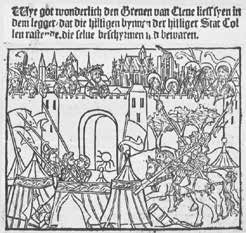
Figure 6: Johann Koelfoff; Cronica von der hilliger Stat van Coellen, 1499
Whether or not we can read this early seventeenth century event backwards into
the period under study here, it seems likely that the busts would have been involved
in some processions. In these events, double vision would have been in
full effect, as the lifelike busts moved through the church and into the city, juxtaposed
with the “real” live bodies of those who carried them. Here, the “imagined
life” of the reliquaries would have been suggested both by their movement and
their physical features, while their object status remained on display, particularly
because this movement relied on the intervention of human agents. Therefore,
the use and appearance of the reliquary bust amplifies the tension between the
animate and the inanimate, simultaneously affirming and destabilizing its ability
to present the real presence of the saint.
However, it is important to note that this destabilization did not prevent the
saint from acting through this sculpted bust, as is evident in the use of these busts
in an incident in 1268. In this year, the city of Cologne was attacked by the forces
of Archbishop Engelbert II von Falkenstein, but according to legend they were
repulsed with the aid of the city’s patron saint, Gereon, as well as Ursula and her
Virgins (Montgomery 2010, 102p.). A 1499 woodcut illustration of this attack
depicts this moment in a telling manner: here, the city’s saintly protectors are
depicted
on the right side of the city walls, identifiable by their haloes (cf. figure 6).
While the three saints on the far right –
Gereon, Severinus, and a companion – are
shown from the waist up, as if standing
behind
the crenellations of the wall, the two
female
saints are depicted as busts. Holladay
suggests that this could reflect a practice
in the late fifteenth century or earlier of
bringing the busts from the church to the
ramparts
in times of danger (Holladay 1997,
80). Given that this use of reliquaries is well
attested in other contexts, her argument is
convincing, and provides another example
of how the busts were understood both as
objects and as lives, able in this physical
form to provide aid.
Indeed, the artist’s choice to render Ursula and her companion differently than
the other patron saints of the city suggests that for him – and for the presumed
readers of the chronicle in which this illustration is found – the busts were a
recognizable sculptural form, through which divine presence could act. In other
words, the Ursula
busts had the potential to bridge the gap between the earthly
and the divine; their “puppet performance” could mediate between God and man.
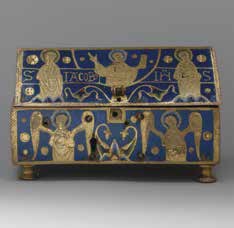
Figure 7: Reliquary casket; Limoges (France), c. 1200-1220.
Relics, reliquaries, and double vision
The evidence of the 1499 woodcut indicates that medieval viewers saw no conflict
in the idea that inanimate (yet lifelike) objects could function efficaciously as
stand-ins (or, indeed, act-fors) for the saints they represented. Their combination
of two apparently contradictory ontological states – the inanimate and the animate
– was therefore not something that needed to be overcome, or even overlooked.
The double vision inspired by these busts did not detract from their efficacy.
Here again, puppetry provides a way to analyze the positive potential of
this play with boundaries. As Tillis suggests in his concept of double vision,
the puppet “pleasurably challenges” its audience to consider the binaries that it
questions. The notion of pleasure is crucial here, both for the puppet and for the
Ursula busts, because it suggests that the indeterminacy of such objects can be
productive, leading the audience to deeper reflection. Such reflection takes on a
special meaning for the Ursula busts, the primary function of which was to hold
relics. The relics contained in these busts were actual pieces of dead bodies, often
including entire skulls as well as smaller bones and fragments (Bergmann 1989;
Urbanek 2010). At the same time, however, the doctrine of bodily resurrection
attributed
holy animacy to the relics. This doctrine holds that a reunion of the
physical body and the soul will occur on the day of the Last Judgment. Prior
to that time, the bodies of normal humans would decay, while their souls lay
dormant in anticipation of the end times. The souls of saints and martyrs, on the
other hand, were believed to have been resurrected upon their death, skipping
the wait to join God because of their remarkable favor in his eyes. This primary
resurrection
was not a corporeal one, but it was understood that the bodies of
these
saints – and, by extension, their relics – acted as a direct link to God in
heaven, as the spirits that were so irrevocably linked to these bodies were already
there (Brown 1981, 72). Herein lies the ontological paradox: relics were simultaneously
dead matter, and part of an eternal, living body.
In addition, the relic embodies a representational paradox, and it is here that the
reliquary plays an important role. From a strictly materialist perspective, relics
are simply bones. Like the consecrated host, their outward appearance provides
no indication of their actual divine status as a part of the to-be-glorified body of
the saint (Geary 1991, 5). As the cult of relics developed, the reliquary emerged
as a means of communicating the theological truth of the relic. Eventually, the
reliquary became so essential to this task that canon 62 of the Fourth Lateran
Council in 1215 decreed that “old relics may not be exhibited outside of a vessel.”6
These reliquaries took a wide variety of forms, including caskets, purses, architectural
shrines, and figural forms such as arms, feet, and heads.7
No matter its form, the reliquary acted as a framing device that signaled the
preciousness of its relics. It often accomplished this task through a combination of
precious materiality and craftsmanship. For example, a French reliquary châsse
dating to the first quarter of the thirteenth century communicates its value not
only through the use of gold, but also through the tricky, expensive technique of
enamelwork (cf. figure 7).
Here, the value of the relic it contained is signaled
by means of an analogy, wherein the high
terrestrial value of these materials parallels the
high celestial value of the relics. This analogy
could also work on another level. Brigitte
Buettner has suggested that these precious materials
performed two related functions: first,
they signaled the preciousness of the relics,
and second, they inspired the beholder to recognize
the inferiority of these same materials
in comparison with the relics contained therein
(Buettner 2005, 57).
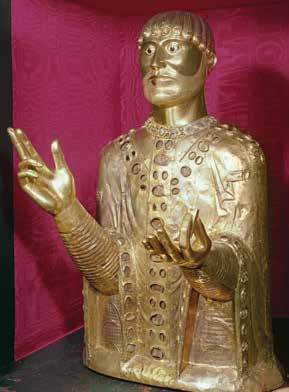
Figure 8: Bust reliquary of St. Baudime; French (Auvergne), mid-12th century.
This logic can be found in both non-figural
and figural reliquaries, including head reliquaries.
The reliquary bust of Saint Baudime,
for example, dating to the second half of the twelfth century, is made of copper
gilt applied to a wooden core, with
details of its clothing decorated by
gemstones, and its eyes rendered in
ivory and horn (cf. figure 8; Boehm
1990, 285pp.).
As it did with non-figural
reliquaries,
this golden exterior no
doubt caused the viewer to reflect
on its value, and then on the value
of the relics it held. However, the
humanoid form adds another interpretive
layer, suggesting not only the
heavenly power of the relic, but also
the reality of its bodily presence. A
golden bust reliquary like that of
Saint Baudime thereby communicates
not only the value of the relic, but
also the truth of bodily resurrection.
In a sense, it pictures the saint in his
future glory, his body transformed
by the divine from the dead, decaying
stuff of death to the incorruptible
materiality of eternal life (Legner
1995, 257; Fricke 2007, 145).
At the same time, however, one must acknowledge that the glittering materiality
of Baudime’s bust also served to undermine the reality of its bodily presence.
Double vision is in evidence here, too, as the life suggested by details like
Baudime’s carefully stippled beard and striking eyes is interrupted by the obvious
artificiality of its metal skin. This bust seems to exist in a space and time separate
from our own, as signaled by its piercing, unfocused gaze, and the frozen gestures
of its hands. These aesthetic choices contribute to a theological aim, in which
this bust represents the future reality of the saint, who will indeed exist outside
of space and time as we know it. Here, then, the ontological musings inspired by
double vision relate primarily to the distance between the earthly and the divine.
The Ursula busts, by contrast, are crafted out of materials without self-evident
terrestrial value. To be sure, many of these figures still use gold, but it is
predominantly used in naturalistic ways, as for example in the details of clothing.
Even the detail of gilding the hair of these busts has a naturalistic bent, suggesting
light playing on blond or light-colored hair (cf. figure 3). The overall impression
of these busts is of real, fleshy humans, not so far removed from the medieval viewer
who contemplated them. Yet, as I have demonstrated, this impression of life
is consistently undermined in the many ways that these busts were used and encountered.
How, then, do these busts use this double vision to explore the paradox
of the relic?
To answer this question, we must return again to what puppetry can tell us
about aesthetic choice. When a maker designs a puppet, he/she makes both aesthetic
and mechanical choices; for example, he/she must decide if it will be operated
with an internal rod (a rod puppet), or with strings from above (a marionette).
He/she must then also decide its humanoid features: will these be comically exaggerated,
generic, or stylized? Each of these choices in turns determines the kinds
of stories and effects the puppet will have. As Basil Jones writes, these form the
puppet’s “meta-script,” which dictate, at least in part, how a puppeteer can use
the puppet effectively, and what kinds of meanings it can successfully convey
(Jones 2014, 64). The meta-script of the Ursula busts indicates that the primary
meanings they were intended to communicate relate to the tension between the
animate and the inanimate.
This tension is heightened in those cases where the Ursula bust provided
visual access to the relics it contained through trefoil and quatrefoil openings
(cf. figure 4). The juxtaposition of the carved and painted face with actual bones
could assert a potential corporeal likeness: beneath this artificial face are real
bones. The relationship between the artificiality of the bust and the reality of the
bones would have been further complicated by the obvious beauty of the painted
face, in contrast to the unremarkable appearance of the fragments of bones. Yet
again, this object makes clear that appearances – and by extension, the senses –
can be deceiving, particularly when it comes to sacred things.
Like reliquaries made of more precious materials, then, the wood-and-polychromy
of the Cologne Ursula busts teach the viewer a theological lesson
about the limits of human perception with regards to the divine. For these
reliquaries, it is not the preciousness of the materials but the suggestion of human intimacy that first attracts the viewer. Like the precious materials,
however, this attraction is not where the true value of this object lies; rather, it
is contained within, in the relics of the saints. As I have argued, this was also
the effect of all reliquary busts; what sets the wood-and-polychromy Ursula
busts apart from other reliquary busts is that this tension relied entirely on the
simultaneous suggestion and denial of the human. These busts thus evidence
a medieval engagement with the inherent paradox of representation as a devotional
tool.
Understanding the Ursula busts as analogous to puppets allows us to see these objects
as sites of encounter between the divine and the human. To be sure, the relics
held inside these busts also offered this possibility. However, the bust reliquary
frames this space of encounter as analogous to a human life, one with which the
human user could communicate. This suggestion, however, is undercut by the
recognition that it is, in fact, not human – and not alive – at all.
While this realization might seem threatening to some, the framework of
puppetry suggests a different outcome for this destabilization of boundaries. The
liminality of the Ursula busts provided access to the divine. To argue that the bust
reliquary is analogous to the puppet, then, is to argue that it was a mimetic tool
deployed deliberately for its in-between status. As John Bell writes, the essence
of the puppet “is not mastery of the material world, but a constant negotiation
back and forth with it” (Bell 2014, 50). The Ursula bust reliquary, too, calls into
question the real and the copy as it simultaneously affirms and denies its animation,
both in appearance and in use. The tension between appearance and reality
– the paradox of representation itself – is at the root of these liminal objects. Like
the puppet, the Ursula busts suggest life, but time and again they reveal themselves
to be mere things. Ultimately, this denial has theological power: though the
busts might not be the saint, they still provide access to the saint – not by virtue of
their crafted faces, however, but by the relics hidden within. The tension between
the illusionism of the bust and its obvious object status, then, calls attention to and
amplifies the tension of the relic itself.
Conclusion: Productive mimesis
I have demonstrated how the lens of puppetry can help us understand a group of
objects from medieval Cologne, a world both temporally and conceptually removed
from our own. The framework of puppetry has provided a way to think
about how the form and function of the Ursula busts worked in tandem to create
a devotionally
valuable object. Furthermore, this framework has suggested that
these reliquaries were useful not in spite of their status as material representations,
but because of it. Puppetry thereby offers a different assessment of the value
of mimesis
than that usually attributed to the medieval world.
Christianity’s official stance on the value of representation has always been
fraught. Two major philosophical strains are at the heart of representation’s ambivalent
status: first, the biblical prohibition against images of the divine, as
expressed
in the Second Commandment, and second, Christianity’s inherited
Neoplatonism, which understood images as degraded copies of the Real (Wildberg
2019). As a result, there was a persistent anxiety about the function and
dangers of representation. The work of the art historian Michael Camille, in particular,
traces the idea that representation was conceived of as a “sinister magic” in
the medieval period (Camille 1989, 62).8 The feelings of ambivalence and anxiety
that images clearly inspired in the medieval period are an important field of study,
and there is still much to be explored in particular about how medieval laypeople
wrestled with this anxiety – both with regards to theater, and to the visual arts
– in their daily practices. However, the example of the Ursula bust reliquaries
suggests that the act of mimesis – of imitation, representation, and reproduction –
also served a productive purpose within the Christian framework.
The idea of mimesis as “sinister magic” did not end with the Middle Ages,
however. Indeed, as the religious reformations of the sixteenth century swept
through Europe, the role of representation in Christian practice – both visual and
theatrical – was radically reevaluated.9 Even today, mimesis is often approached
with ambivalence, revealing a continued concern about the lines between the real
and the copy, and the animate and the inanimate.
Technological innovations in artificial intelligence (AI) have once again
brought this ambivalence to the fore of Western culture. Popular representations of AI suggest the same discomfort with hybridity that was implied by Pinocchio’s
laughter; as one scientist remarked in 1996, “[m]achines, even in our homes, will
become so intelligent that they may become our tyrannical masters” (Bloomfield
& Vurdubakis 1997, 39). Such dystopian visions, in which increasingly sophisticated
machines will, in the end, destroy humanity, are not uncommon, and reveal
a new way of expressing an old concern about mimesis, that somehow the “copy”
will overtake or degrade the “original.”
However, other interpreters see in AI a new way forward, in which the dualism
of human and machine exists not in opposition, but in an emergent balance.
This strain of thought is generally associated with “posthumanism,” to borrow
N. Katherine Hayles’ term, which posits that humans and machines both will be
so radically transformed by technological advances that there will be little use in
trying to separate the one from the other (Hayles 1999). The posthuman, then,
will be both human and machine, or indeed, neither human nor machine. Out of
this hybridity, furthermore, arise new potentialities for (post)humanity.
Through the framework of puppetry, we can see how the gap between
posthumanism and the reliquary busts of medieval Cologne is far smaller than
one might imagine. The imagined lives of the Ursula busts are produced through
the improvisatory, innovative, and fundamentally destabilizing hybridity of the
puppet, which depends on a close interaction between inanimate, crafted objects
and animate humans. In a similar manner, the play between the animate human
and the manmade machine creates the “life” of AI. What this suggests, then, is
that reflection on our own ambivalences toward mimesis is necessary for exploring
AI’s potential, not simply as a technological innovation but as a philosophical
and cultural force. Just as the materiality of the reliquary bust challenged its
viewers to reflect on powers beyond human understanding, so too can the liminal
status of AI provide an opportunity for us to challenge and transform our own
assumptions about the artificial and the real, the animate and the inanimate, and,
indeed, what it means to have life.
[1] This article is derived from a chapter of my dissertation, so I would like to thank my advisor, Jacqueline Jung, for her invaluable feedback during the writing process. In addition, I must also thank J. Christian Greer and Lynna Dhanani for their feedback as I crafted this article.
[2] Puppetry’s marginalization in Western culture has been traced in detail in Shershow (1995). I explore historiography of this marginalization in greater depth in the introduction to my dissertation (Oing 2020), which may be consulted for further information.
[3] Earlier legends spoke of Ursula’s eleven companions, but this number increased a thousandfold by the ninth and tenth centuries, probably due to a misreading of a Latin inscription (cf. Holladay 1997, 72).
[4] Foundational texts on the study of the medieval cult of saints include Brown (1981) and Geary (1978).
[5] For an overview of the changing displays in medieval churches, see Snoek (1995).
[6] “…reliquiae amodo extra capsam nullatenus ostendatur.” As quoted in the Internet Medieval Source Book (1996).
[7] For more on this range of forms, see Hahn (2012).
[8] A number of medievalists have explored expressions of this anxiety towards images in the Middle Ages. In addition to Camille, see also Belting (1990), Bynum (2011), and Freedberg (1989).
[9] On the changing place of the image in Reformation Europe, see Koerner (2004) and Michalski (1993).
References
Primary LiteratureThe Canons of the Fourth Lateran Council, 1215. Halsall, Paul (Hg.), The Internet Medieval Sourcebook.
Accessed 10 October 2019. Retrieved from:
Collodi, Carlo (1883). The Adventures of Pinocchio (translated from Italian by Geoffrey Brock). New York: New York Review of Books, 2009.
Secondary Literature
Bell, John (1996). Death & Performing Objects. P-Form, 41, 16-20.
Bell, John (2014). Playing with the Eternal Uncanny: The Persistent Life of Lifeless Objects. In Dassia N. Posner, Claudia Orenstein, John Bell (Hg.), The Routledge Companion to Puppetry and Material Performance (pp. 43-52). Abingdon, Oxon; New York, NY: Routledge.
Belting, Hans (1990). The Image and its Public in the Middle Ages: Form and Function of Early Paintings of the Passion. (Translated from German by Mark Bartusis and Raymond Meyer). New Rochelle, NY: A.D. Caratzas.
Bergmann, Ulrike (1989). Kölner Bildschnitzerwerkstätten vom 11. bis zum ausgehenden 14. Jahrhundert. In Anton Legner (Hg.), Die Holzskulpturen des Mittelalters (1000-1400) (S. 19-63). Köln: Das Museum.
Bergmann, Ulrike (1996). St. Ursula, Goldene Kammer. In Margrit Jüsten-Hedtrich (Hg.), Kölner Kirchen und ihre mittelalterliche Ausstattung, Bd. 2, Colonia Romanica XI (S. 225-231).
Bloomfield, Brian P., Vurdubakis, Theo (1997). The Revenge of the Object? On Artificial Intelligence as a Cultural Enterprise. Social Analysis: The International Journal of Anthropology 41.1, 29-45.
Boehm, Barbara Drake (1990). Medieval Head Reliquaries of the Massif Central. Diss., New York University.
Brown, Peter (1981). The Cult of the Saints: Its Rise and Function in Latin Christianity. Chicago: University of Chicago Press.
Buettner, Brigitte (2005). From Bones to Stones – Reflections on Jeweled Reliquaries. In Bruno Reudenbach, Gia Toussaint (Hg.), Reliquiare im Mittelalter (S. 43-59). Berlin: Akademie Verlag.
Bynum, Caroline Walker (2011). Christian Materiality: An Essay on Religion in Late Medieval Europe. New York: Zone Books; Cambridge, MA: MIT Press.
Camille, Michael (1989). The Gothic Idol: Ideology and Image-Making in Medieval Art. Cambridge; New York: Cambridge University Press.
Craig, E. Gordon (1908). The Actor and the Über-Marionette. The Mask: A Monthly Journal of the Art of Theatre 1(2), 3-15.
Freedberg, David (1989). The Power of Images: Studies in the History and Theory of Response. Chicago: University of Chicago Press.
Fricke, Beate (2007). Entlarvende Gesichter – Gedanken zur Genese der Kopfreliquiare in Italien. In Jeanette Kohl, Rebecca Müller (Hg.), Kopf/Bild: Die Büste in Mittelalter und Früher Neuzeit (S. 133-152). München; Berlin: Deutscher Kunstverlag.
Geary, Patrick (1991). Furta Sacra: Thefts of Relics in the Central Middle Ages. Princeton: Princeton University Press.
Hahn, Cynthia (2012). Strange Beauty: Issues in the Making and Meaning of Reliquaries, 400-circa 1204. University Park, PA: Pennsylvania State University Press.
Hayles, N. Katherine (1999). How We Became Posthuman: Virtual Bodies in Cybernetics, Literature, and Informatics. Chicago: University of Chicago Press.
Holladay, Joan A. (1997). Relics, Reliquaries, and Religious Women: Visualizing the Holy Virgins of Cologne. Studies in Iconography, 18, 67-118.
Jones, Basil (2014). Puppetry, Authorship, and the Ur-Narrative. In Dassia N. Posner, Claudia Orenstein, John Bell (Eds.), The Routledge Companion to Puppetry and Material Performance (S. 61-68). Abingdon, Oxon; New York, NY: Routledge.
Kang, Minsoo (2011). Sublime Dreams of Living Machines: The Automaton in the European Imagination. Cambridge, MA: Harvard University Press.
Kleist, Heinrich von (1810/2007). Über das Marionettentheater. In Wolfgang Kurock, (Hg.), Puppen & Masken. Frankfurt a. M.: Verlag Wilfried Nold.
Koerner, Joseph Leo (2004). The Reformation of the Image. Chicago: University of Chicago Press.
Kroos, Renate (1985). Vom Umgang mit Reliquien. In Anton Legner Anton (Hg.), Ornamenta Ecclesiae: Kunst und Künstler der Romanik, Bd. 3 (S. 25-49). Köln: Stadt Köln.
Legner, Anton (1995). Reliquien in Kunst und Kult: zwischen Antike und Aufklärung. Darmstadt: Wissenschaftliche Buchgesellschaft.
Legner, Anton (2003). Kölner Heilige und Heligtümer: ein Jahrtausend europäischer Reliquienkultur. Köln: Greven.
Michalski, Sergiusz (1993). The Reformation and the Visual Arts: The Protestant Image Question in Western and Eastern Europe. London; New York: Routledge.
Montgomery, Scott B. (2010). St. Ursula and the Eleven Thousand Virgins of Cologne: Relics, Reliquaries, and the Visual Culture of Group Sanctity in Late Medieval Europe. Oxford; New York: Peter Lang.
Oing, Michelle (2020). Puppet Potential: Visual and Kinetic Mimesis in Late Medieval and Early Modern Sculpture. Diss., Yale University.
Proschan, Frank (1983). The Semiotic Study of Puppets, Masks, and Performing Objects. Semiotica 47 (1-4), 3-44.
Rath, Markus (2017). Die Gliederpuppe: Kult, Kunst, Konzept. Boston: De Gruyter.
Schechner, Richard (2003). Actuals. In Richard Schechner (Ed.), Performance Theory. London; New York: Routledge.
Schneider, Rebecca (2014). Theatre & History. Houndmills, Basingstoke, Hampshire; New York: Palgrave Macmillan.
Shershow, Scott (1995). Puppets and ‘Popular’ Culture. Ithaca: Cornell University Press.
Snoek, G. J. C. (1995). Medieval Piety from Relics to the Eucharist: A Process of Mutual Interaction. Leiden; New York: E. J. Brill.
Tillis, Steve (1992). Toward an Aesthetics of the Puppet: Puppetry as a Theatrical Art. New York: Greenwood Press.
Urbanek, Regina (2010). Die Goldene Kammer von St. Ursula in Köln: zu Gestalt und Ausstattung vom Mittelalter bis zum Barock. Worms: Wernersche Verlagsgesellschaft.
Wildberg, Christian (2019). Neoplatonism. The Stanford Encyclopedia of Philosophy. Accessed 5 June
2019. Retrieved from:
List of Figures
Figure 1: Reliquary bust of a companion of St. Ursula, c. 1330/40; oak, walnut, and polychromy; 47 x 38 x 22 cm,; Goldene Kammer, Church of St. Ursula, Cologne, Germany. Photo by author.
Figure 2: Reliquary bust of a companion of St. Ursula, c. 1350; oak, walnut, and polychromy; 62.5 x 34 x 31 cm.; Goldene Kammer, Church of St. Ursula, Cologne, Germany. Photo by author.Figure 3: Reliquary bust of a companion of St. Ursula, c. 1340; walnut, polychromy; 51 x 26.5 x 24 cm.; Museum Schnütgen, Cologne, Germany. Photo by author.
Figure 4: Detail of Figure 2, showing opening with visible relics. Photo by author.
Figure 5: View of the Goldene Kammer, St Ursula, Cologne; arrangement dating to 1643. Photo by author.
Figure 6: Johann Koelfoff; Cronica von der hilliger Stat van Coellen, 1499, (“Defense of Cologne on October 14-15, 1268”); Kölnisches Stadtmuseum, Cologne. Photo: Rheinisches Bildarchiv Cologne. RBA_mf091133. Retrieved from: < https://www.kulturelles-erbe-koeln.de/documents/ obj/ 05203804 >
Figure 7: Reliquary casket; Limoges (France), c. 1200-1220; copper and champlevé enamel; The
Metropolitan Museum of Art, New York City, bequest of Benjamin Altman, 1913. Retrieved from:
Figure 8: Bust reliquary of St. Baudime; French (Auvergne), mid-12th century; copper-gilt over walnut core, ivory, and horn; Mairie de Saint-Nectaire, France. Credit: © bpk Bildagentur / Art Resource, NY.
About the Author / Über die Autorin
Michelle OingMellon Fellowship of Scholars in the Humanities, Stanford University, 2020- 2022; PhD History of Art & Architecture, Yale University, 2020; M.Phil. and MA History of Art & Architecture, Yale University; M.T.S. History of Christianity, Harvard Divinity School; B.A. History of Art & Architecture, Brown University; publications on “Holy Puppets” and “Votive Bodies”; several awards, honors and invited lectures; teaching, research and museum experience.

Correspondence address / Korrespondenz-Adresse:
mkoing@stanford.edu